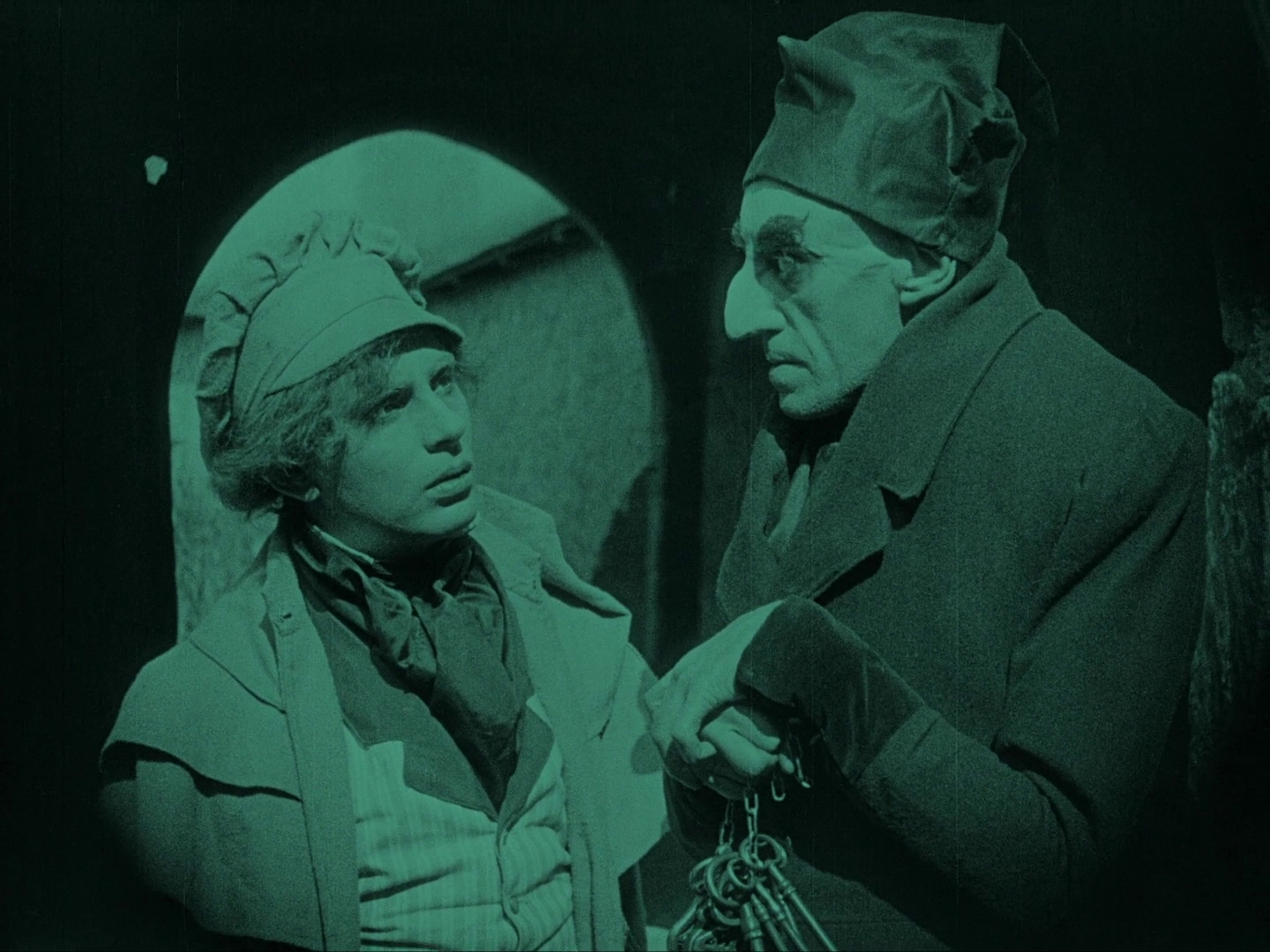
The mysterious Count Orlok summons Thomas Hutter to his remote Transylvanian castle in the mountains. The eerie Orlok seeks to buy a house near Hutter and his wife, Ellen. But Orlok is also the vampire Nosferatu, and when Hutter struggles to escape the castle, he knows that Ellen is in grave danger.
EN
“The shadows of German expressionism attain their most haunting manifestation in Murnau's images. For the film image as itself a shadow Murnau has a special feeling. Physically a shadow, a shadow cast on the screen by film passing through the projector, the image in Murnau becomes charged with the emotional coloring of a shadow, with a poignant and disquieting sense that what we watch moving on the screen is the world's ghost. It is as a shadow, a shadow ascending the stairs and extending its long clawed arm toward the door, that the vampire comes to the wife in her bedroom; and as a shadow he grasps the palpitant heart within her breast. As body yields to ghost in the film image, so her flesh yields here to the specter of death. After this night of spectral rather than carnal knowledge, the rising light of daybreak comes in through the window, the window she opened to let in death's shadow, and kills the vampire. Fittingly, it is light that destroys the vampire, that dispels his shadow; but this, we cannot forget, is the light of the medium of shadows.”
Gilberto Perez1
“The sunlight thrusts into Nosferatu’s heart like the stake which, with no help whatsoever, well-aimed, can terminate the vampire’s nocturnal life. The cock, of course, sings at the new-born day; but, at the same time, it has become a metaphor of betrayal. One couldn’t explain otherwise why the vampire, so revolting at first, seems suddenly so human when dying. Ellen’s body was the lure which – so one reads in the vampire’s book – works only if the victim is willing. It is quite a dilemma! Ellen, so much the better her body with no willpower left, waited for Death to come – one could clearly understand that when the woman stretches her arms eagerly towards him. Through her immense love Ellen breaks a taboo; she gives herself up to the monster and pays the price with her own life. Thus she re-established the menaced norm. Only through her sacrifice the damned offspring will end. When the artificial night of cinema comes to an end – with it, also the fatal attraction of moving images finish, which can give life to terrible arbitrary acts – the ghost of this half-real, half-fantastic mute creature fades away.”
Frieda Grafe2
“Nosferatu, though it has now become a classic, was for a long time unappreciated. As late as 1946 Theodore Huff wrote that it was rather crude and too ‘Teutonic’, that the acting was laboured, and that since the film had been produced on a shoestring - and not by American economic standards - the trick photography was ludicrous rather than impressive. One cannot disagree with Huffs strictures on the actors. Ruth Landshoff, for example, who plays the ship-owner's sister, was not even a professional actress, but a girl Murnau had noticed in Grunewald, on her way to school. Beautiful and refined, she reminded him of a picture by Kaulbach, and he went to great lengths to meet her mother and ask permission for her to take part in the film during the holidays. Wangenheim, who played Hutter, and Greta Schroeder, one of Wegener's wives, who played Ellen, were never great actors. And whatever the visitor to the studio during Schloss Vogelod may have said, Murnau had not yet acquired the masterly technique with actors that was to be evident in his more mature works. There remain Max Schreck as the vampire and Granach as Knock. No American horror film has anything like the sobriety of Nosferatu, in which the ludicrous is always avoided by means of that rigorous abstraction which is inherited from the finest development of Expressionism. If Granach sometimes overdoes the facial contortions, it is because he was always naturally exuberant. But Murnau managed to make out of Max Schreck, a normally undistinguished actor, a tragically ambiguous character, whom Andre Gide called ‘dashing, venturesome, and even very pleasingly bold’, and whom the audience sees vanish at cockcrow as much with regret as with relief. But Gide complains of the film's Germanic heaviness and sums it up as a failure. It was impossible that he should like what remained fundamentally a romantic abstraction, very far removed from his own French Protestant severity. Nevertheless Nosferatu was a long way from the facile horrors of Frankenstein or Dracula.”
Lotte H. Eisner3
- 1Gilberto Perez, The Material Ghost: Films and Their Medium (London: Johns Hopkins University Press, 1998), 148.
- 2Frieda Grafe, “A view of the mysterious essence of nature,” Il Cinema Ritrovato Catalogue, 1995.
- 3Lotte H. Eisner, Murnau (London: Martin Seeker & Warburg Limited, 1973), 118-119.
NL
“Nosferatu, eine Symphonie des Grauens van Friedrich Wilhelm Murnau, uit 1922. Bram Stoker verplaatst naar Bremen in het pestjaar 1838. De vampier heeft een rattenkop en wordt gevolgd door een rattenleger; hij wordt niet omgebracht met een staak door het hart, maar door de eerste lichtstraal na een langgerekte liefdesnacht. Deze film markeerde het begin van Dracula’s triomftocht door de westerse filmwereld.”
Frieda Grafe1

